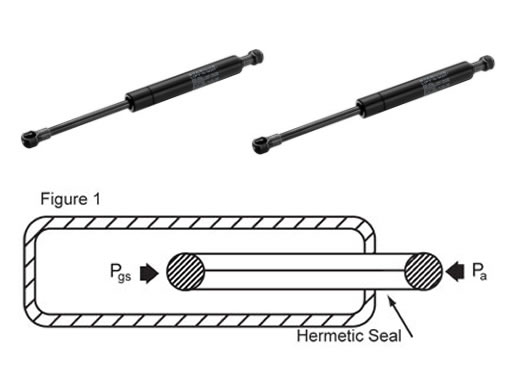
When most people hear the word “spring,” they envision a coiled piece of metal that’s able to retract under pressure, followed by bouncing back to its normal state after the pressure has been released. While this is a common way in which springs are designed, not all springs feature this design. There are different types of springs, the two most common of which are mechanical and gas. So, what’s the difference between mechanical springs and gas springs exactly?
How Mechanical Springs Work
Mechanical springs are conventional coiled-metal springs that store energy when compressed. As pressure is exerted upon a mechanical spring, it deforms by shrinking to a shorter height. While in this deformed state, the mechanical spring will hold energy. When the pressure is released, the energy stored within the mechanical spring reverts it back to its original height.
All mechanical springs have an elastic limit, which is the degree to which the spring will deform under pressure without breaking. Mechanical springs can be compressed beyond their elastic limit, but this often results in permanent damage.
How Gas Springs Work
Like mechanical springs, gas springs are designed to store energy, but the way in which they perform this operation varies from their mechanical counterparts. While mechanical springs rely on physical deformation to store energy, gas springs rely on pressurized gas. They feature a cylindrical-shaped container in which inert gas is stored at a specific pressure. The pressurized gas pushes against the rod, creating energy similar to that of a conventional mechanical spring.
Gas springs are available in a variety of designs with an equally varied number of features. Some gas springs, for example, feature a locking mechanism that allows companies to lock the gas spring in a fully extended position. Of course, companies can also unlock the gas spring to revert it back into a collapsed, non-extended position.
When compared to mechanical springs, gas springs are able to store, and exert, more energy. While smaller gas springs exert less energy, some of the larger gas springs used in the manufacturing industry are able to exert up to 40 tons of pressure. It’s also worth mentioning that some gas springs feature a degressive design, meaning they exert more power as the cylinder stretches out.
Gas springs are customizable, allowing companies to choose their designed output force, end fittings and other components. Mechanical springs generally don’t offer this same level of customization. Rather, companies are restricted to choosing from just a few basic designs for mechanical springs.
